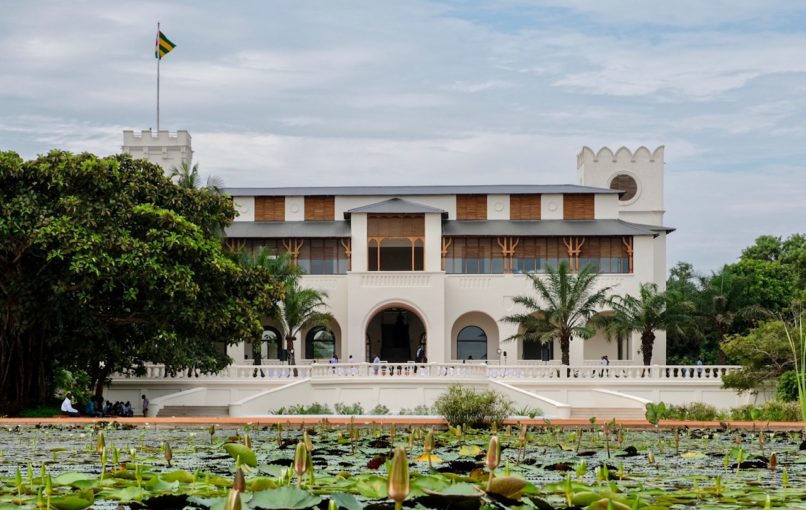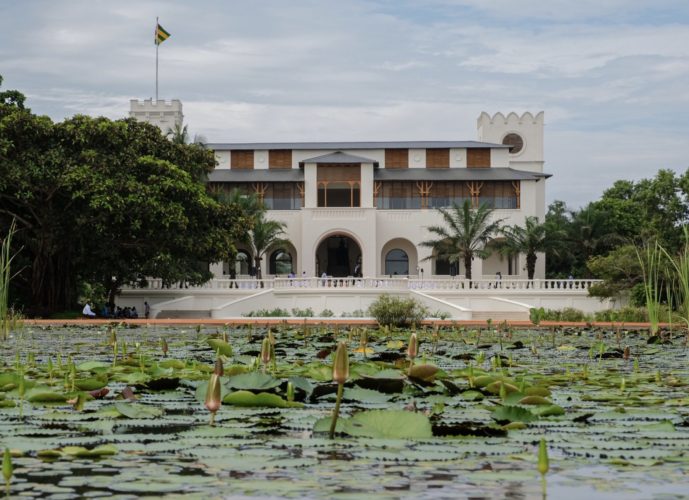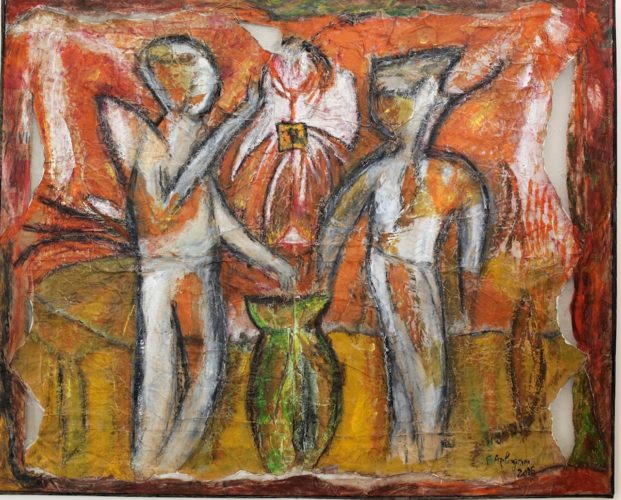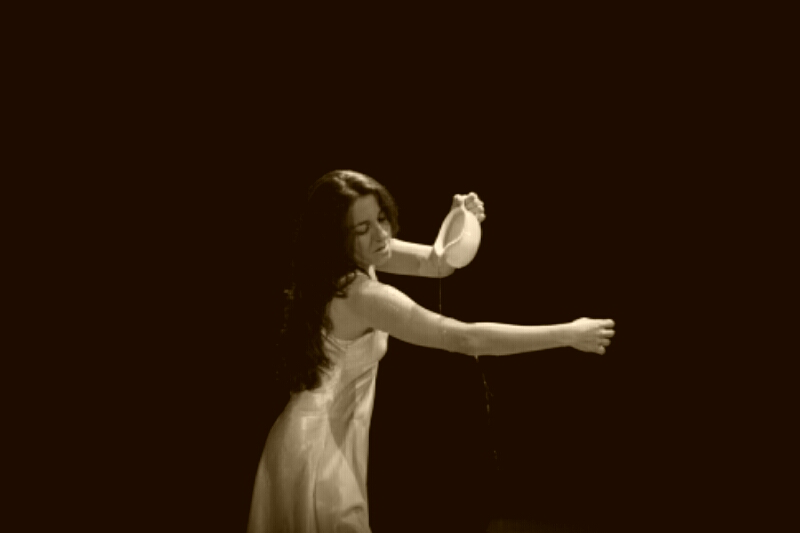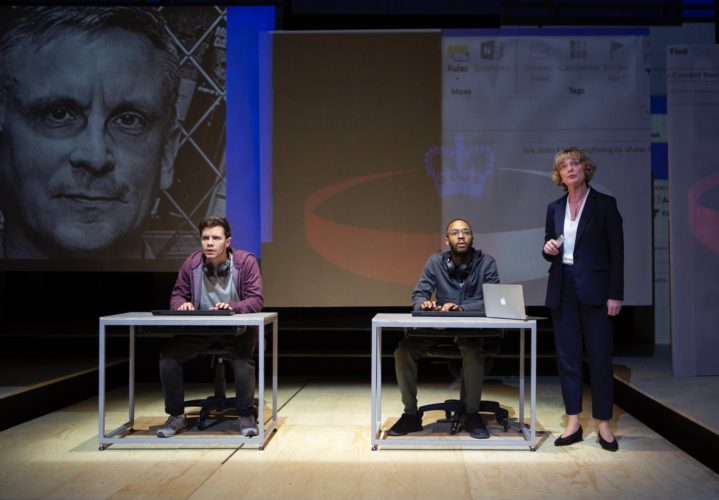African contemporary art, is now perhaps the most collectable art in the world. Contemporary African art fairs, such as 1-54 and Mali’s capital Bamako’s photographic biennials, draw blockbuster crowds. Yet much of the art produced by African artists, ultimately ends up either in western galleries or private collections, with few galleries on the continent considered to be large enough to host them. A fact western museums often point to, when arguing against the repatriation of the continent’s historic artefacts. But this trend appears to be changing, Senegal’s capital Dakar, in 2018, saw the opening of the Museum of Black Civilizations. The museum has room for 18,000 works of art. Although, at the moment, many of the gallery rooms remain empty, there is hope that the museum will eventually house many works thought lost to the continent. Beside Senegal, Benin and Nigeria are also opening their own new galleries. But perhaps the most exciting event so far is the opening of Palais de Lomé, the first art institute whose renovations and opening were solely funded by the country itself. Palais de Lomé was once a former colonial palace, a palace originally built to fulfill the desire of the then German Governor August Kohler, to have a colonial capital visible from the sea. It is now though a symbol of Togo reclaiming its artistic heritage.
The entire project was overseen by Sonia Lawson, a Togolese woman, who is a former consultant for L’Oréal in Paris. Lawson stated in a recent interview “The objective of the project was to transform this patrimonial building, open it to the public, and show an Africa of today,” Lawson goes on to state. “The centre is here to present the best of Africa, not just what’s best from Togo, or from neighbouring countries in West Africa, but what’s best in art and design from the rest of Africa.”
Palais de Lomé covers nearly 26,000-square-foot and will house a permanent exhibition space, dedicated galleries for temporary shows, live performances, exhibitions devoted to both photography and design, alongside a bookstore as well as two restaurants. The venue will celebrate Togo’s rich and varied history, with a commitment of supporting a variety of art forms, as well as having a focus on both science and technology.
Palais de Lomé will also host activities focused on environmental sustainability. With its stunning twenty six acres, which stretches to the sea-front, Palais de Lomé is home to a precious biodiverse environment. The site offers an unparalleled urban experience right in the heart of the country’s capital, an experience which is rare in any world capital.
The institute currently has five exhibitions which are Togo of the Kings, an exhibit which takes visitors on the role this tiny country had played in the history of the region, as well as the role of the kings who ruled the region’s kingdoms. Many of the artefacts displayed are taken from current regional kings’ personal collections.
Infinity is another of the five exhibits on display and it focuses on the work of the late artist and designer Kossi Aguessy. Aguessy was one of the country’s leading international artists and designers who sadly died before Palais de Lome’s opening. What had initially been planned as a collaboration between Kossi and the curator for this particular exhibit, has now become a retrospective of his beautiful work. Kossi during his short life saw no distinction between art and design but felt they were interconnected.
Three Borders is an exhibit which looks at the work of six artists from six different regional countries and it highlights how despite the geographic boundaries these countries do have a close cultural relationship. The artists in this group show are as follows: Kelani Abass (Nigeria), Edwige Aplogan (Benin), Tété Azankpo (Togo), Serge Clottey (Ghana), Euloge Glélé (Benin), Issah Al-Hassan (Ghana), Emmanuel Sogbadji (Togo) and Prince Toffa (Benin). Issah Al- Hassan, who is part of an arts collective in his home country of Ghana stated at the opening that he felt the best way to ensure a future generation of African artists and collectors was to have more institutions like this one alongside taking art outside these countries’ capitals to local communities. “If they can see it then it will be something they themselves will either want to create or to collect.”
Lomé+ takes a simultaneously historical and poetic approach to deliver an uncompromising point of view of the Togolese capital. The exhibition allows visitors to explore Lomé, past, present, and future.
The remaining photographic exhibition is called Renovations and it takes a look at the journey of the building’s renovations. One of the team of French architects who lead the project, Laurent Volay stated of the process, “all the work done on the building was carried out by local crafts people and it was a journey for us both to learn to work together but we are so proud of what we achieved together.”
Palais de Lomé will also host live performances, alongside art workshops for local school children. There are hopes that Palais de Lomé could potentially have the same international appeal as the Guggenheim in Bilbao, an art institute which transformed that previously little none Spanish region. The importance of this institute to Togo was highlighted by the attendance on its opening night of not only the three regional kings whose artefacts appear in the kingship exhibition but also the country’s prime minister alongside Togo’s culture minister, who spoke movingly about the institute’s significance. African artists were also in attendance, coming not only from Togo but from neighbouring countries, emphasizing how the institute has already become a symbol of regional pride. A Senegalese rapper at a concert hosted by the Institut Français, the evening following Palais de Lome’s opening, even gave it a shout out during his performance. The beautifully restored Palais de Lomé stands as an open invitation to everyone to come to this tiny country, while America and the United Kingdom appear to be turning increasingly inward, Togo looks set to welcome the world.
form-idea.com London, 26th February 2019.
